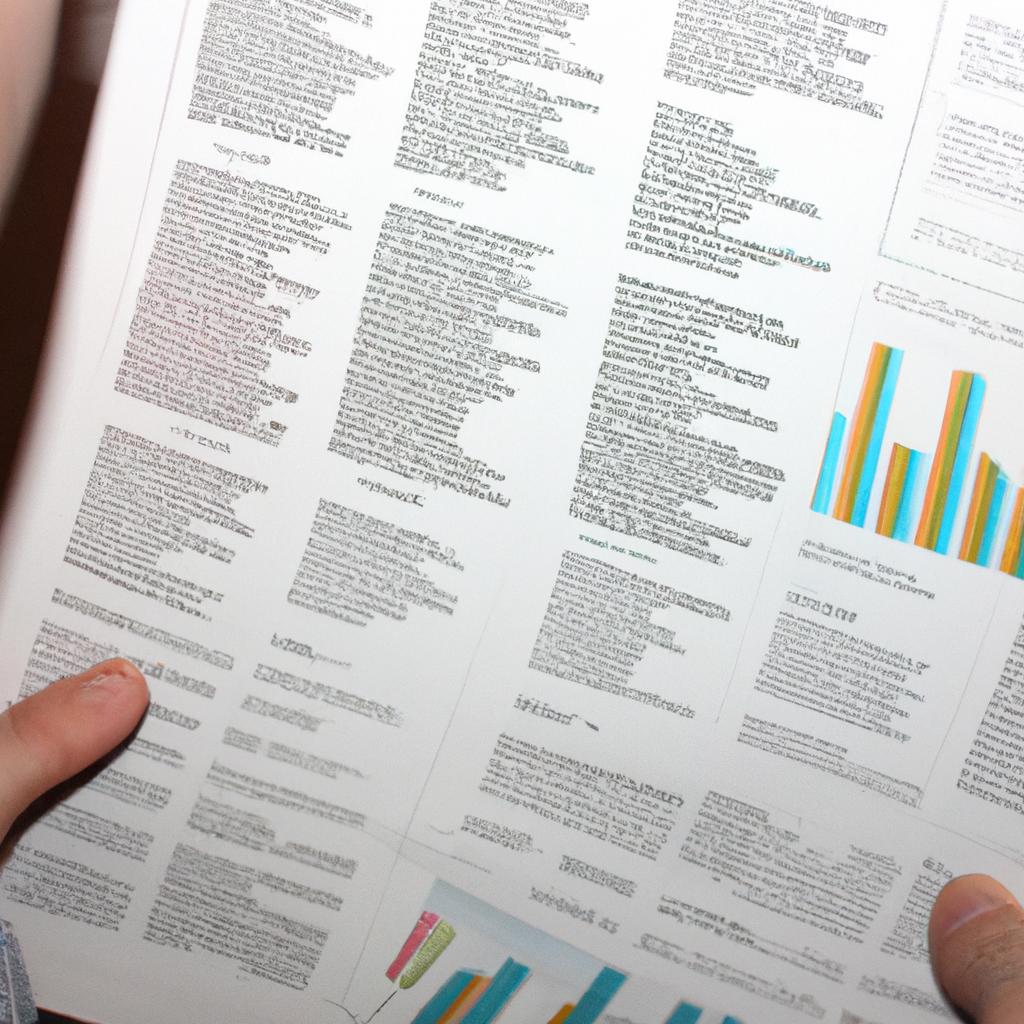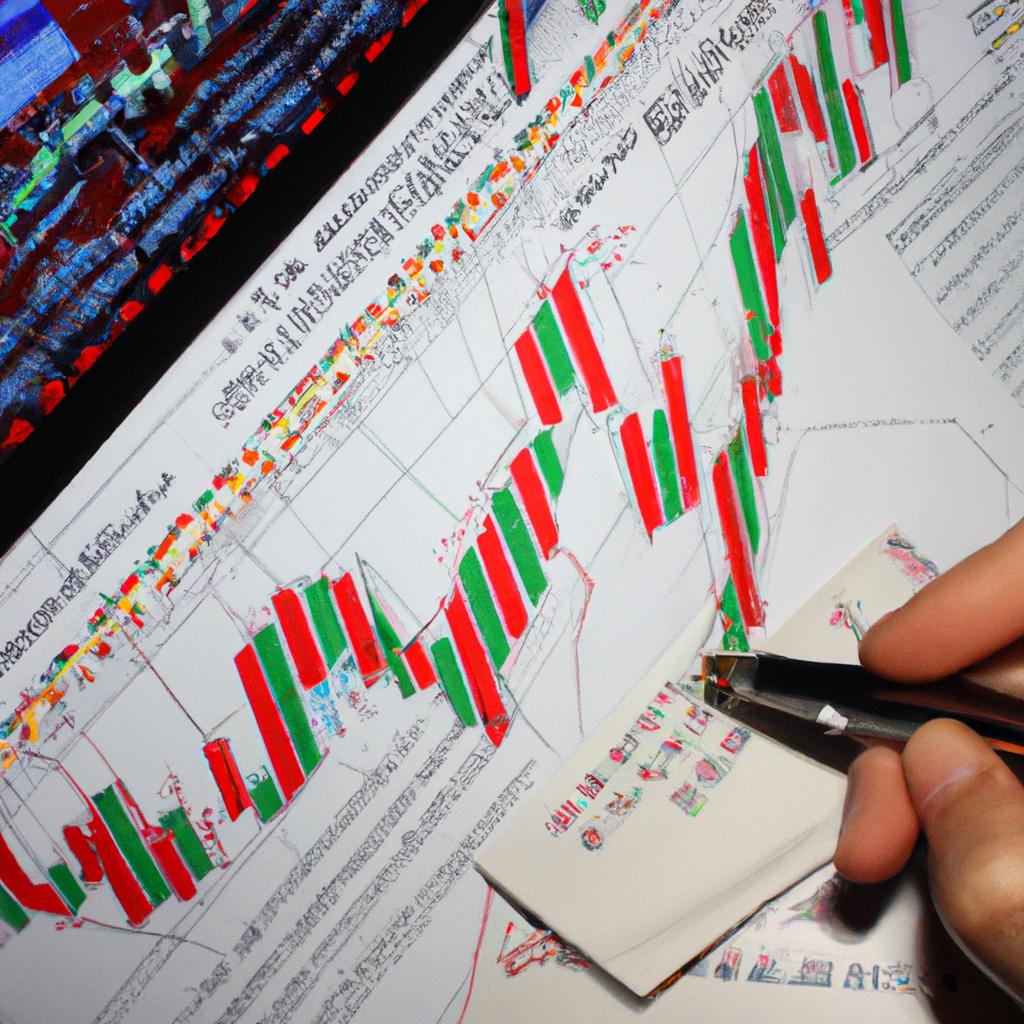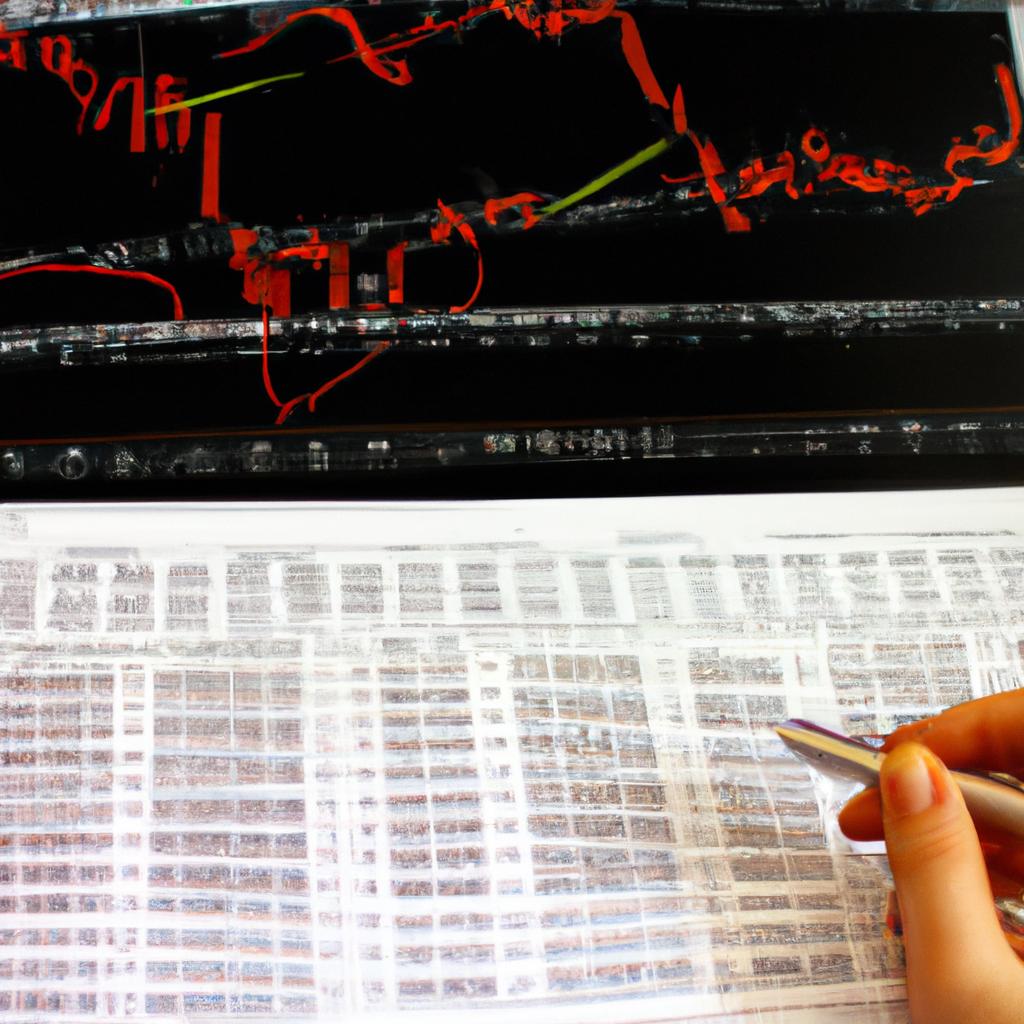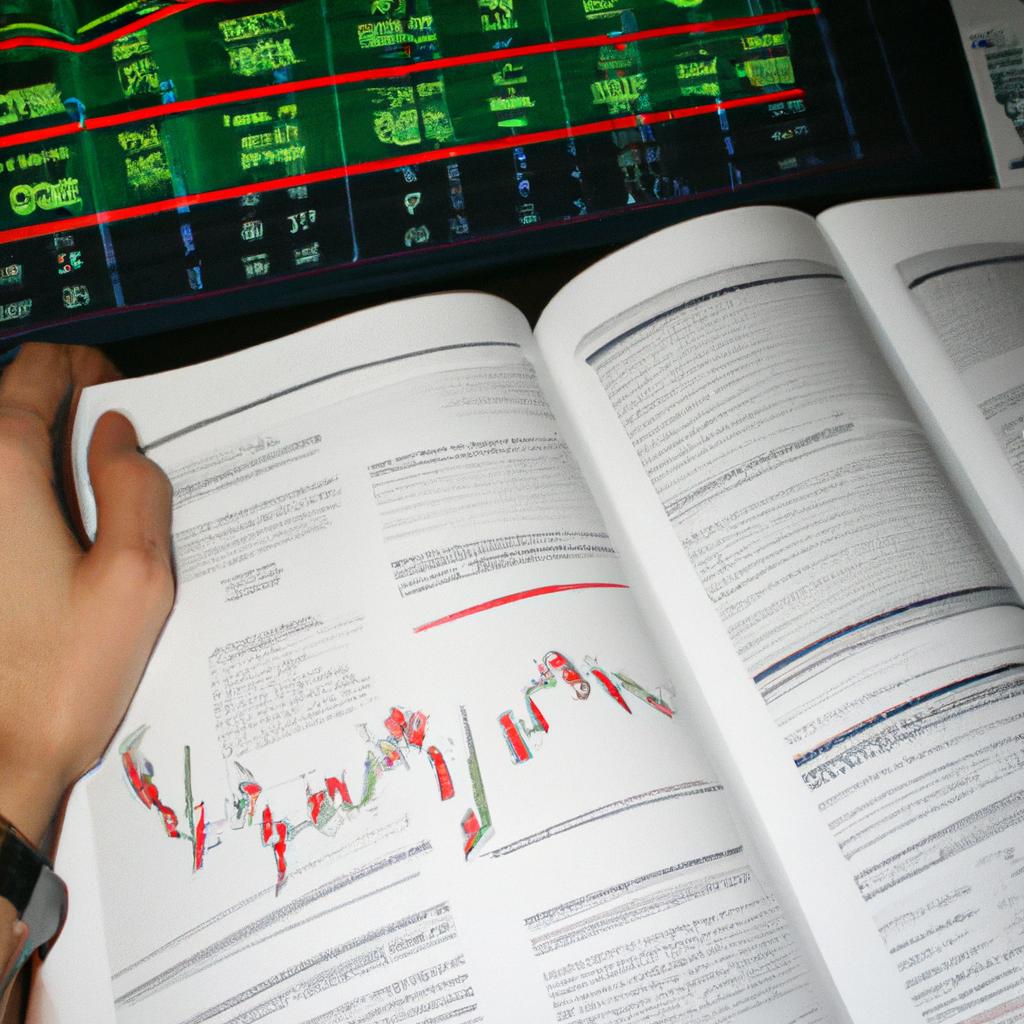Types of Commodities: A Guide for Investing in the Business
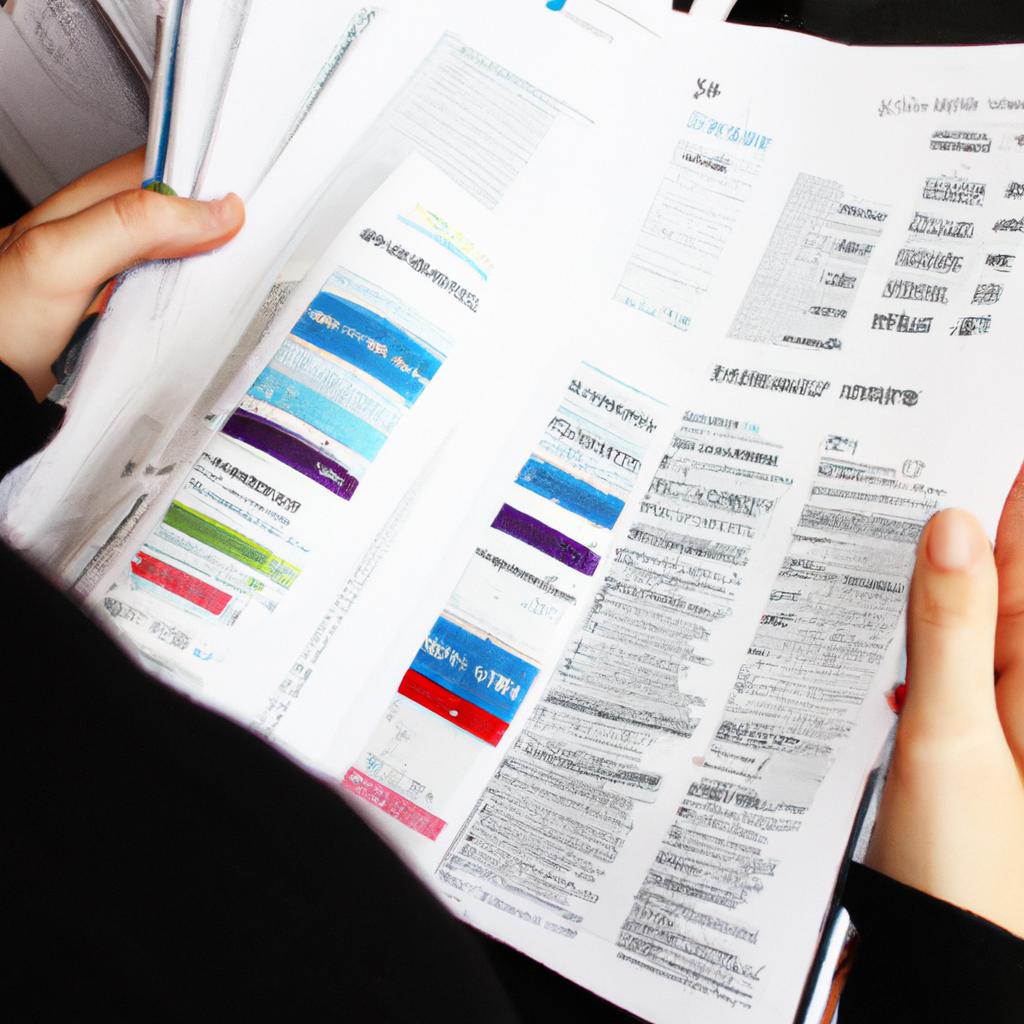
Commodity investing has gained significant attention in recent years as investors seek to diversify their portfolios and hedge against inflation. Understanding the different types of commodities is essential for those looking to venture into this market. For instance, imagine a hypothetical investor named John who wishes to invest in the commodity sector but lacks knowledge about its intricacies. By exploring various commodities such as energy, metals, agriculture, and livestock, John can make informed decisions that align with his investment goals.
To begin with, one type of commodity worth considering is energy. This category encompasses crude oil, natural gas, coal, and electricity. Energy commodities are heavily influenced by geopolitical events and supply-demand dynamics; thus, they present unique opportunities and risks within the market. Investing in these commodities requires careful analysis of factors like weather patterns for natural gas or political stability in major oil-producing countries.
Another important group of commodities consists of metals such as gold, silver, copper, and platinum. These precious and industrial metals have long been sought after due to their intrinsic value and diverse applications across industries. Similar to energy commodities, metal prices are subject to fluctuations based on global economic conditions and geopolitical tensions. Investors interested in metals must closely monitor factors like interest rates and currency exchange rates that impact pricing trends.
In summary In summary, understanding the different types of commodities, including energy, metals, agriculture, and livestock, is essential for investors like John who wish to venture into the commodity sector. Each category has its unique characteristics and factors that influence prices and trends. By conducting thorough research and analysis, John can make informed decisions that align with his investment goals and navigate the complexities of the commodity market.
Types of agricultural commodities
Types of Agricultural Commodities
One of the key categories within the world of commodities is agricultural commodities. These types of commodities include various products that are derived from farming or agricultural processes. To better understand this category, let us consider an example: soybeans.
Soybeans have become increasingly popular as an agricultural commodity in recent years due to their versatile nature and wide range of applications. From food production to animal feed and biofuel manufacturing, soybeans play a significant role in multiple industries worldwide. This case study exemplifies the importance and diversity of agricultural commodities.
To provide a comprehensive overview, here are some key points about agricultural commodities:
- Volatility: Agricultural commodities can be subject to highly volatile markets due to factors such as weather conditions, crop diseases, and geopolitical events.
- Global demand: The global population’s growing need for food creates a constant demand for agricultural commodities.
- Interconnectedness: The agriculture industry relies on complex supply chains involving farmers, distributors, processors, and end consumers.
- Price fluctuations: Commodities prices often fluctuate based on market forces such as supply and demand dynamics or government policies.
This table provides examples of different agricultural commodities along with their primary uses:
| Commodity | Primary Uses |
|---|---|
| Corn | Food additives, ethanol |
| Wheat | Baking flour |
| Coffee | Beverage |
| Sugar | Sweetener |
In summary, understanding the types of agricultural commodities is crucial when considering investing in this sector. With volatility being a defining characteristic, it is important to recognize the interconnectedness of global supply chains and the impact they can have on prices. By examining specific examples like soybeans and exploring diverse commodity options such as corn, wheat, coffee, and sugar, investors can gain insight into this dynamic market.
Moving forward into our next section about “Types of energy commodities,” we will explore another essential aspect of the commodities market.
Types of energy commodities
Types of Energy Commodities
In the previous section, we explored various types of agricultural commodities. Now, let’s delve into another important category: energy commodities. To illustrate their significance, consider the case study of a hypothetical solar power company.
This solar power company relies on energy commodities to generate electricity from sunlight. One example is photovoltaic (PV) panels that convert sunlight directly into electricity. These PV panels require silicon wafers as a crucial component, which are made from polysilicon—a type of energy commodity derived from refining metallurgical-grade silicon.
When it comes to investing in energy commodities, it is essential to understand the different types available and their market dynamics. Here are some key points to consider:
- Crude Oil:
- Highly traded commodity worldwide
- Influenced by geopolitical events and OPEC decisions
- Used for transportation, heating, manufacturing, etc.
- Price fluctuations impact global economy
Let’s now explore these types further through a table:
| Type | Usage | Key Factors Affecting Prices |
|---|---|---|
| Natural Gas | Electricity generation | Supply-demand balance |
| Coal | Power generation | Environmental regulations |
| Uranium | Nuclear power production | Government policies and reactor shutdowns |
As an investor or researcher exploring opportunities in the energy sector, understanding these factors can help you make informed decisions based on market trends and forecasts.
Transitioning into our next topic on precious metals commodities, it is worth noting how they differ from energy commodities. Precious metals commodities hold unique value due to their rarity and industrial applications. Let’s examine this category in more detail with reference to gold, silver, platinum, and palladium.
Now let’s move on to exploring Types of Precious Metals Commodities without delay.
Types of precious metals commodities
Types of Precious Metals Commodities
Transitioning from our exploration of energy commodities, let us now delve into the realm of precious metals. To bring these concepts to life, consider a hypothetical scenario where an investor named Jane is looking to diversify her portfolio. After careful consideration, she decides to invest in precious metals due to their historical value and potential for long-term stability.
Precious metals encompass a variety of commodities that are highly valued for their rarity and unique properties. Some of the most common types include gold, silver, platinum, and palladium. These metals have been sought after throughout history for various purposes, including jewelry making, industrial applications, and as stores of wealth.
To better understand the significance and potential benefits of investing in precious metals commodities, let us explore some key factors:
- Hedge against inflation: Precious metals have traditionally served as a hedge against inflation due to their inherent value and limited supply.
- Diversification: Including precious metals in one’s investment portfolio can help mitigate risk by diversifying across different asset classes.
- Safe haven during economic uncertainties: During times of economic instability or geopolitical tensions, investors often turn to precious metals as a safe haven investment option.
- Industrial demand: Apart from their use in jewelry and investments, precious metals also find extensive application in various industries such as electronics, automotive manufacturing, and medical devices.
Table: Comparison of Key Characteristics of Different Precious Metals
| Metal | Rarity | Market Demand | Historical Value |
|---|---|---|---|
| Gold | High | Strong | Consistently high |
| Silver | Moderate | Significant | Volatile |
| Platinum | Low | Substantial | Relatively stable |
| Palladium | Very low | Growing | Rapidly increasing |
As we can see from this table comparing key characteristics, each precious metal offers its own unique advantages and considerations for investors. Whether it be the consistent historical value of gold, the growing market demand for palladium, or the stability of platinum, there are opportunities to explore within this asset class.
Transitioning into our next section on industrial metals commodities, we will continue to expand our understanding of different types of commodities and their potential as investment avenues. By exploring these various sectors, investors like Jane can make informed decisions that align with their financial goals and risk tolerance.
Types of industrial metals commodities
Types of Industrial Metals Commodities
After exploring the various types of precious metals commodities, let us now turn our attention to another important category in the world of commodities investing: industrial metals. To illustrate their significance, let’s consider a hypothetical example involving copper.
Copper, with its excellent electrical conductivity and corrosion resistance, is widely used across industries such as construction, electronics, and telecommunications. Its demand is heavily influenced by economic growth and infrastructure development. For instance, when countries embark on large-scale infrastructure projects like building highways or expanding power grids, the need for copper increases significantly. This surge in demand can have a profound impact on the price of copper as an industrial metal commodity.
Investing in industrial metals commodities offers investors several advantages:
- Diversification: Including industrial metals in your investment portfolio allows you to diversify risk by spreading it across different asset classes.
- Global Demand: The global nature of industrial metals ensures that demand remains stable even if there are fluctuations in specific regions or economies.
- Inflation Hedge: Due to their tangible nature and limited supply, industrial metals often serve as a hedge against inflation.
- Long-Term Potential: As developing nations continue to modernize and build essential infrastructure, the long-term potential for growth in this sector remains promising.
To provide further clarity on the types of industrial metals commodities available for investment consideration, we present a table detailing some key examples:
| Metal | Uses | Price Influencers |
|---|---|---|
| Aluminum | Aerospace industry | Economic conditions |
| Nickel | Stainless steel production | Technological advancements |
| Zinc | Galvanizing steel | Infrastructure spending |
| Lead | Battery manufacturing | Environmental regulations |
As demonstrated above, each type of industrial metal has distinct uses and is influenced by different factors affecting supply and demand dynamics. It is crucial for investors to thoroughly analyze these variables before making any investment decisions in the industrial metals commodities market.
Moving forward, we will delve into yet another fascinating category of commodities: livestock. Understanding this sector can provide valuable insights for investors seeking to diversify their portfolios and capitalize on opportunities within the agricultural industry.
Keep reading to explore the various types of livestock commodities and discover how they contribute to the broader world of commodity trading.
Types of livestock commodities
Types of Livestock Commodities
Continuing our exploration of different types of commodities, let us now delve into the world of livestock commodities. To illustrate how these commodities function in the market, consider the case study of a hypothetical investor who decides to invest in cattle for meat production.
Livestock commodities primarily encompass animals used for food or other agricultural purposes. In this specific case, our investor purchases a herd of cattle with the intention of selling them at a later date when their value has increased. This investment aligns with the concept of long-term gains through breeding and raising animals to maturity. The investor must factor in various elements such as animal health, feed costs, and overall market demand for beef products.
To better understand the dynamics surrounding livestock commodities, we can explore some key points:
- Market Volatility: As with any commodity investment, prices for livestock can fluctuate due to factors such as supply and demand imbalances or unexpected events like disease outbreaks.
- Seasonal Factors: Demand for certain livestock commodities may be influenced by seasonal trends. For instance, there tends to be higher demand for poultry during holiday periods.
- Regulatory Environment: Government regulations related to food safety standards and animal welfare play an essential role in shaping the livestock commodity market.
- Technological Advances: Advancements in areas such as genetics and farming practices have led to improved productivity and efficiency within the industry.
To provide a visual representation of these ideas, here is a table highlighting some key features regarding livestock commodities:
| Key Points | Description |
|---|---|
| Market Volatility | Prices can experience fluctuations due to supply-demand imbalances and unforeseen circumstances. |
| Seasonal Factors | Demand varies throughout the year; holidays often influence consumer preferences. |
| Regulatory Environment | Compliance with government regulations on food safety standards and animal welfare is crucial. |
| Technological Advances | Innovations contribute to enhanced productivity and efficiency in livestock farming. |
As we have seen, investing in livestock commodities requires careful consideration of market dynamics, seasonal factors, regulatory compliance, and technological advancements. By understanding these elements, investors can make informed decisions that align with their investment goals.
Transitioning into our next section on Types of Soft Commodities…
Types of soft commodities
Moving on from livestock commodities, another important category in the world of commodities is soft commodities. Soft commodities refer to agricultural products that are grown rather than raised, often used for food and other consumer goods production. These commodities are typically influenced by factors such as weather conditions, global demand, and government policies.
To illustrate the significance of soft commodities, let’s consider the example of coffee beans. Coffee is one of the most widely consumed beverages globally, with a growing market across various countries. The price and availability of coffee beans can be affected by factors like droughts or excessive rainfall in major coffee-producing regions, changes in consumption patterns due to health trends or economic fluctuations, and political decisions regarding imports and exports.
When it comes to investing in soft commodities, it is crucial to understand their unique characteristics and challenges. Here are some key points to consider:
- Price volatility: Soft commodity markets tend to experience significant price fluctuations due to the influence of unpredictable factors such as weather conditions and disease outbreaks.
- Seasonal variations: Many soft commodities have specific harvest seasons which can impact supply levels throughout the year.
- Global demand dynamics: Factors like population growth, changing dietary preferences, and economic development contribute to shifts in global demand for different soft commodities.
- Sustainability concerns: Increasingly, consumers value sustainably produced agricultural products. Investors need to take into account environmental considerations when assessing potential investments in this sector.
For a clearer overview of various types of soft commodities and their uses, here is a table summarizing some common examples:
| Soft Commodity | Main Uses | Major Producing Regions |
|---|---|---|
| Wheat | Bread making, animal feed | United States, Russia |
| Soybeans | Food processing | Brazil, United States |
| Sugar | Sweetener | Brazil |
| Cotton | Apparel manufacturing | China |
Investing in soft commodities can offer opportunities for diversification and potential returns. However, it is essential to carefully analyze market trends, understand the specific risks associated with each commodity, and stay updated on factors that could influence supply and demand dynamics. By considering these aspects, investors can make informed decisions within this fascinating sector.
Remember, understanding the nuances of different types of commodities is crucial when venturing into the world of investing.

